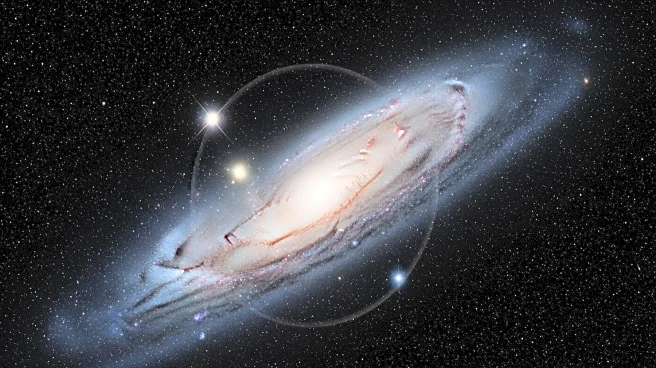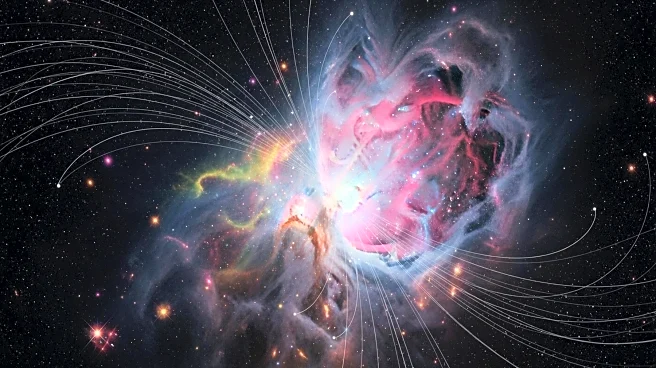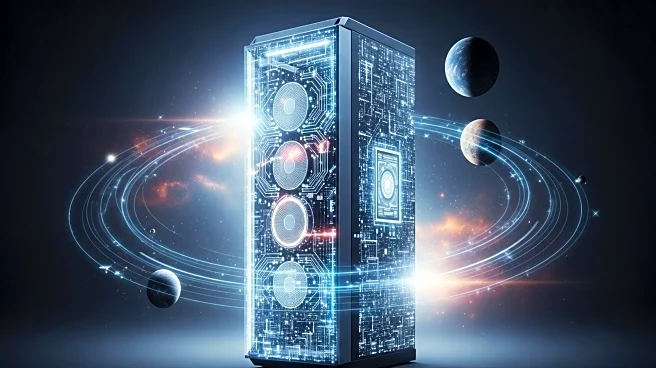What's Happening?
Astronomers have observed a rare 'Einstein cross' phenomenon, where light from a distant galaxy is magnified and repeated five times instead of the usual four. This unusual configuration suggests the presence of a large halo of dark matter, which has enough gravitational pull to bend the light of a galaxy behind it. The discovery was made using the Northern Extended Millimeter Array radio telescopes in France, and further analysis ruled out instrument malfunction. The findings, published in The Astrophysical Journal, offer a unique opportunity to study both the distant galaxy and the invisible matter bending its light.
Why It's Important?
The discovery of this peculiar 'Einstein cross' provides a new avenue for understanding dark matter, a substance that does not emit, absorb, or reflect light, making it invisible and difficult to study. By analyzing how dark matter interacts with cosmic objects, scientists can gain insights into the fundamental structure and behavior of the universe. This could lead to advancements in astrophysics and cosmology, potentially reshaping our understanding of the universe's composition and evolution.
What's Next?
Researchers plan to use future observations to further test and refine computational models of dark matter interactions. This could help in developing more accurate methods for detecting and studying dark matter, ultimately contributing to a deeper understanding of cosmic phenomena and the universe's history.
Beyond the Headlines
The study highlights the challenges and complexities of studying dark matter, which remains one of the most elusive components of the universe. The findings could inspire new research methodologies and technologies aimed at uncovering the mysteries of dark matter and its role in cosmic evolution.











